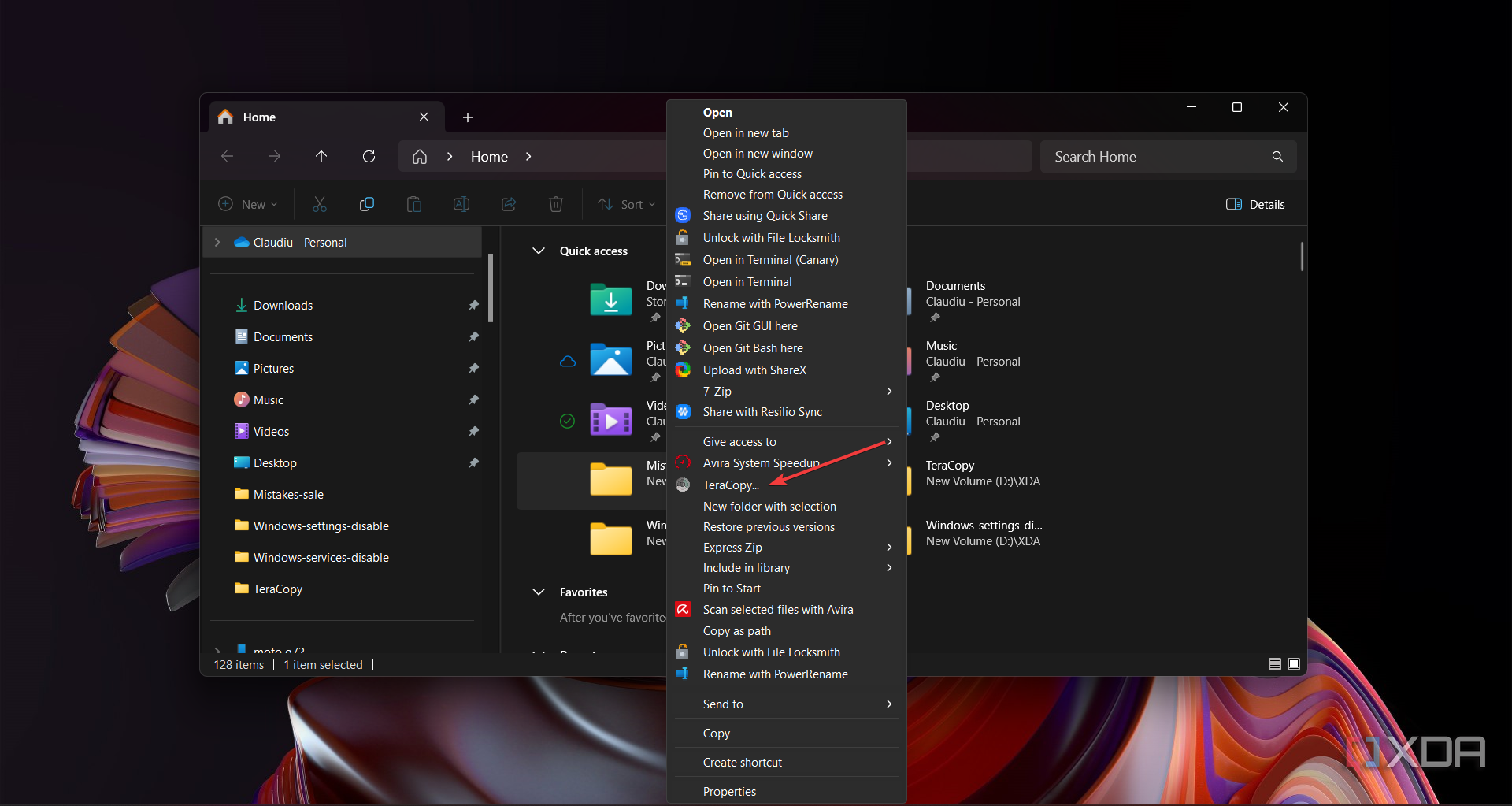I’ve tried a number of file transfer tools over the years, but when it comes to moving files to and from my external drives, I always find myself reaching for TeraCopy. Here are the reasons why this lightweight utility has earned a permanent spot in my workflow.
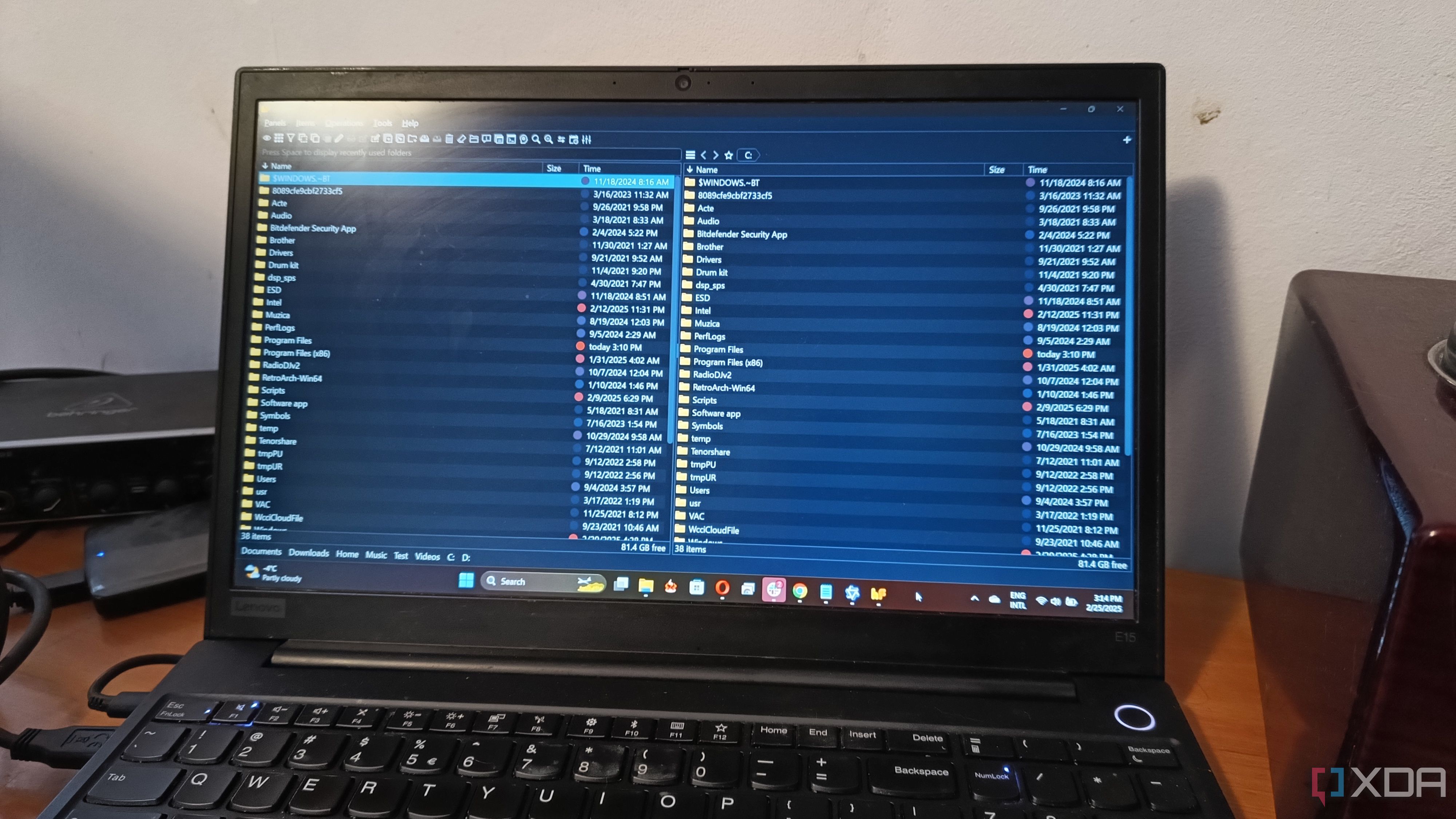
Related
5 best dual-pane file managers for Windows power users
Still using a single-pane file manager? These dual-pane power tools bring twice the efficiency and help you stay productive.
Speed, above all
It’s faster than File Explorer
TeraCopy’s trick to transfer files faster is that it dynamically adjusts block sizes and leverages asynchronous copying routines. When moving large folders or hefty files, I notice a tangible increase in speed compared to the built-in Windows Explorer copy function.
You will notice this efficiency increase on external drives, where interface delays can add up. However, it also depends on the drives you’re copying from and to. TeraCopy won’t do any magic tricks, and it will never exceed the drives’ transfer limits.
Also, the performance difference is negligible for small file transfers. It’s relevant if you need to transfer gigabytes or terabytes of photos, videos, or other types of files.
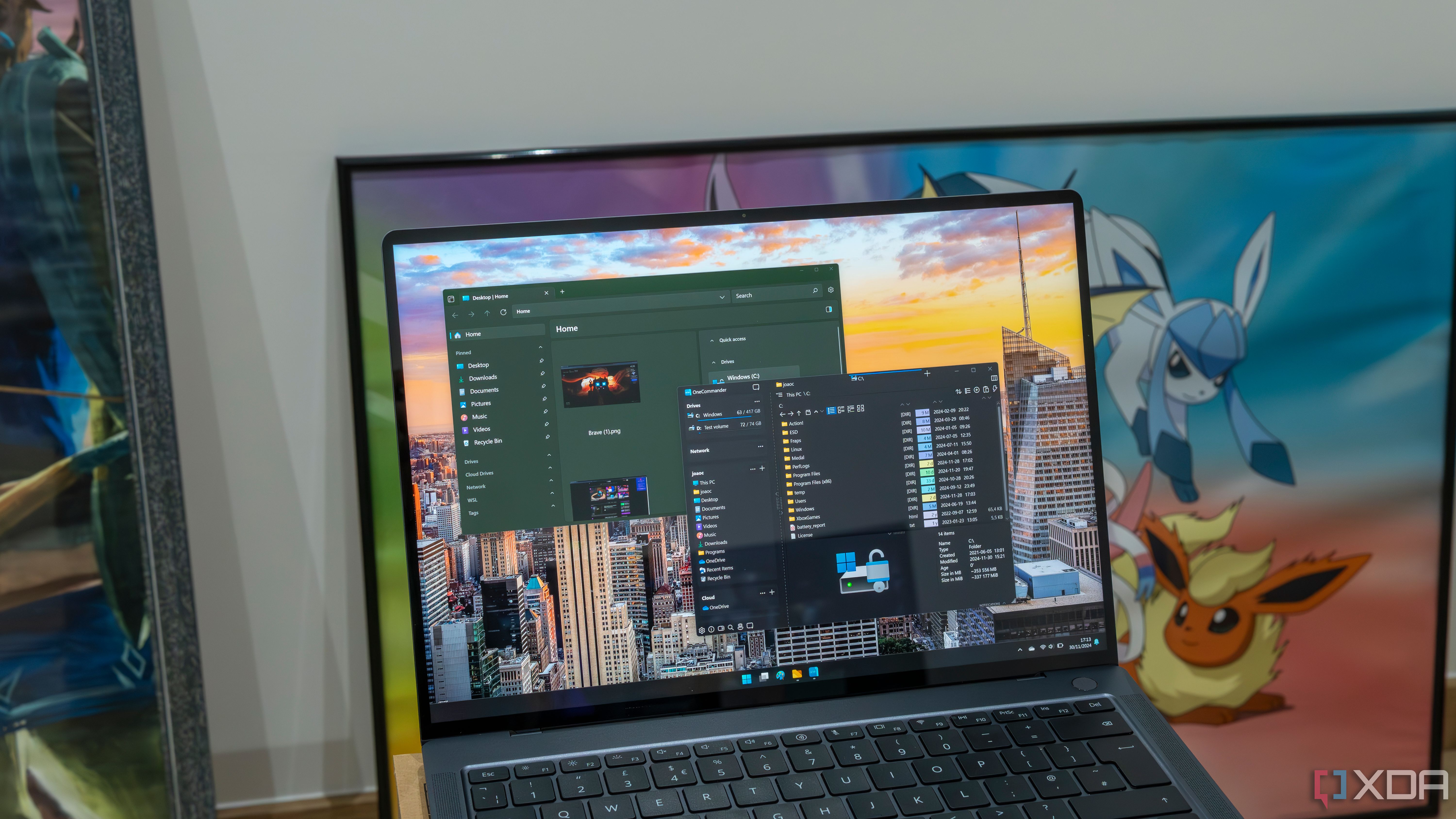
Related
Here’s why you should use TeraCopy instead of the built-in file copier on Windows
Make copy-pasting more efficient
Resuming after an error
You can resume the process
In File Explorer, if the app stumbles on an error, it terminates the process, and you have to start over. It can be anything, from a corrupted file or an external disconnection of the external drive due to imperfect contact.
TeraCopy remembers the process, and whatever happens, you can still resume the transfer. I simulated an error by pulling out the flash drive from the USB port during a transfer. The app signaled an error, but after I reconnected the drive, I was able to resume the process.
Then, you can just verify the files’ integrity and check the transfer log to see what happened. As for corrupted files, you can simply set TeraCopy to skip them. This is an excellent feature if you leave a transfer overnight.
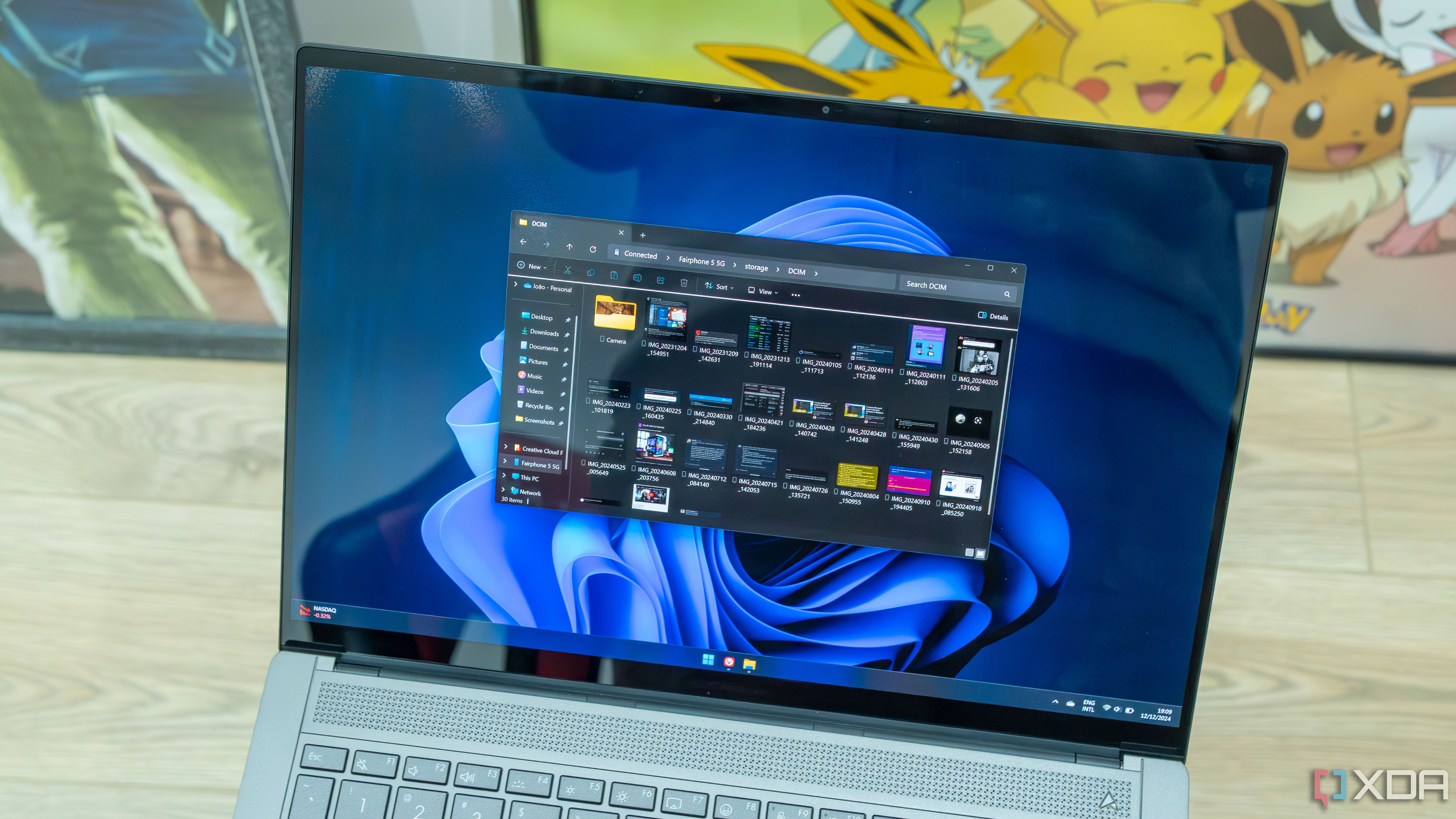
Related
7 things your file manager should be able to do that File Explorer and Finder can’t
It’s time to move on
Queued in transfer jobs
This is a cool productivity tool
Let’s say you want to copy content on multiple drives. What do you do? You copy the files onto a drive, then do the same for the next one, and so on. I wouldn’t recommend doing that with File Explorer at the same time because the process will significantly slow down your system. With TeraCopy, you still can’t make all the transfers simultaneously, but you can set multiple transfer jobs.
They will queue up in the list, and when the first one is finished, the app automatically starts the new one. I tested it with three consecutive jobs because I didn’t need more, but I didn’t see any mention of the limit on possible transfers. For instance, you could queue up transfers overnight to copy some content to many external drives connected to a USB hub and get the results in the morning.
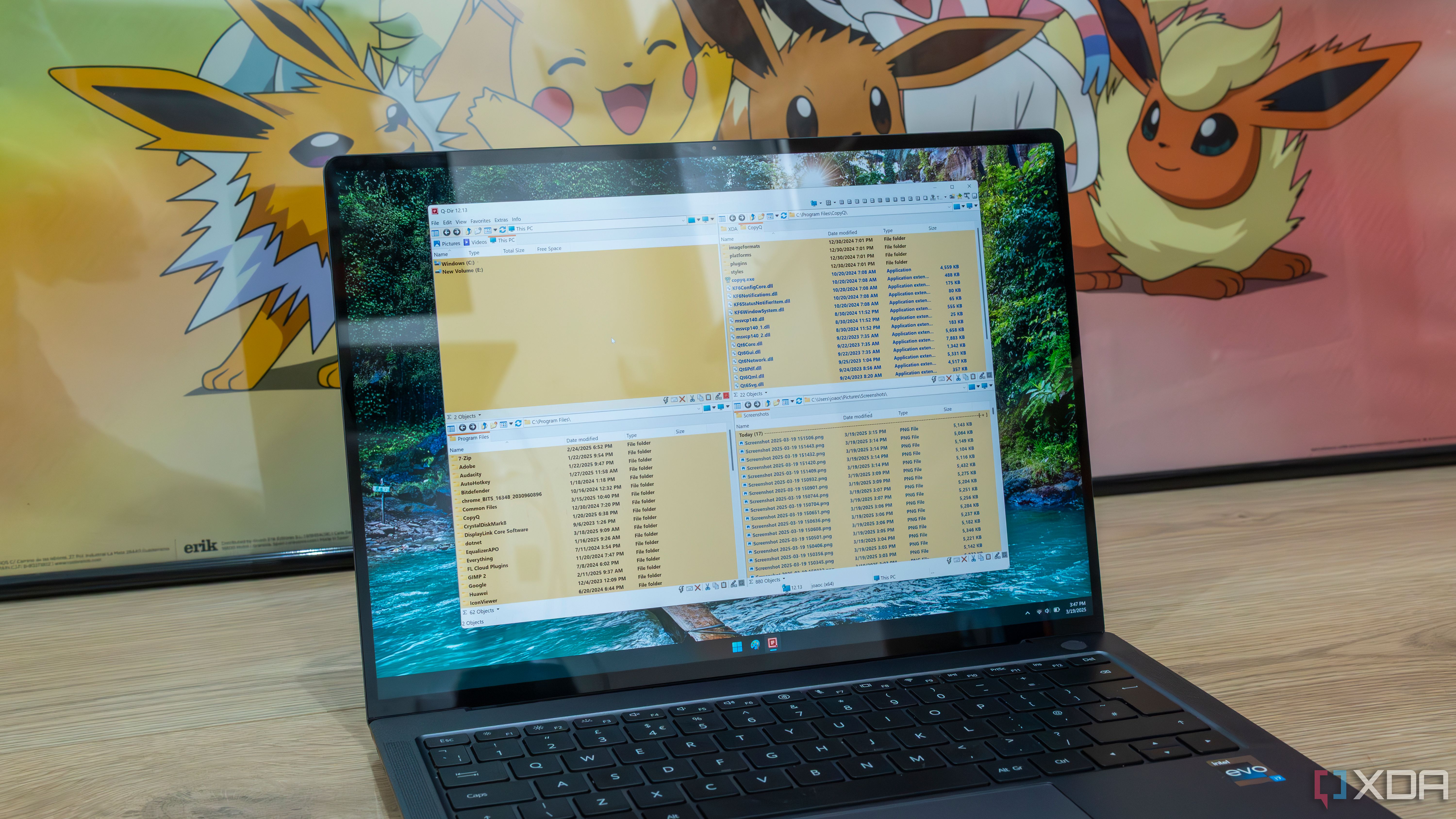
Related
Q-Dir may be everything you need in a Windows file manager — and it’s free
You can’t beat that price
The user interface is not for everyone
It looks a bit complicated
To be honest, at first, TeraCopy’s interface was a bit unclear. It doesn’t look like anything I’ve used before. You need to make a few clicks to set the source and the destination of the files. Then, there are a lot of settings that might be head-scratching for some regular users. You can apply plenty of checksum and error detection standards, set the app to shut down your PC, close the app after completing a transfer, and so forth.
It clearly doesn’t have the straightforward drag-and-drop approach you know from File Explorer. However, the tool works perfectly even if you don’t touch its intricate settings. It works seamlessly as it is, without any touches.

Related
5 ways to take copying and pasting to the next level on Windows
Look beyond CTRL+ C and CTRL+V
It’s great after all
I’m not a fan of the UI either, but the speed and extra features make me come back to TeraCopy every time I need to transfer multiple gigabyte-sized files between my drives. For instance, you can set it to automatically test the copy you’ve transferred. It does take extra time to check them, but if you want to be absolutely sure about the integrity of the copy, that’s something you can do.
Another advantage is that you can actually integrate it with File Explorer. You will see it in the right-click context when you want to manage a file or a folder. Plus, TeraCopy consumes minimal CPU and memory resources during transfers, even when moving large amounts of data.

TeraCopy is especially good with external drives
External drives can be unpredictable with fluctuating read/write speeds. TeraCopy is optimized to handle these variances, using dynamic buffering techniques that help smooth out potential bottlenecks. This optimization ensures that even when one of your external drives is a little temperamental, your data still moves efficiently.
The bottom line is that TeraCopy isn’t a one-size-fits-all tool. It lets me tweak settings like transfer speed limits, buffer sizes, and even specify policies for handling errors. This degree of customization means I can adjust operations to match the specific quirks of my external drives and personal workflow.




